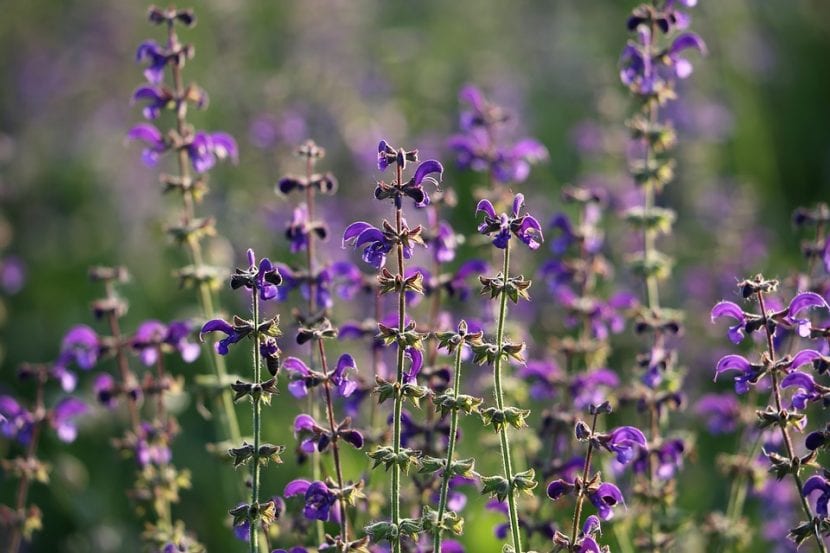
La sage pratensis It is a very interesting plant, able to withstand frost that becomes really beautiful during the summer. As it also does not grow much, it can be kept in a pot without problems throughout its life, or if you prefer in the garden where the sun shines directly.
It does not usually have major pests or diseases, which undoubtedly makes it a magnificent experience to take care of her 🙂.
Origin and characteristics of the Salvia pratensis
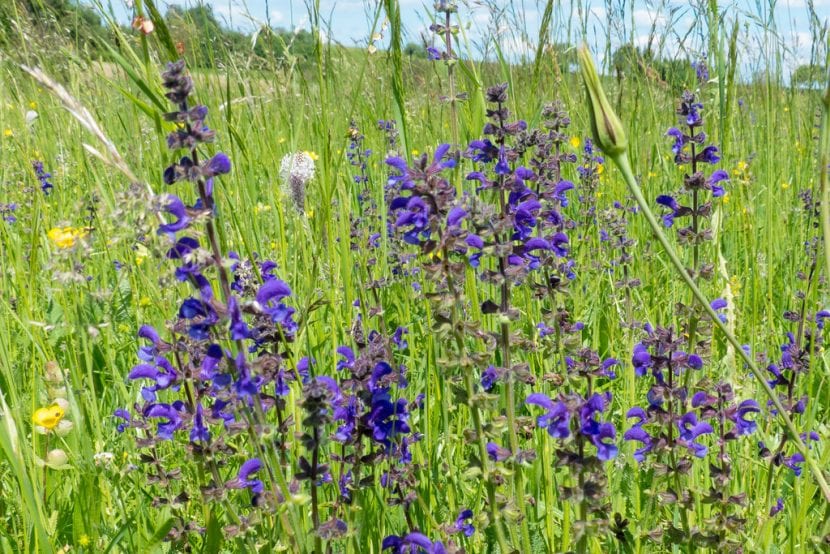
Image - Flickr / Armin S Kowalski
Known by the popular or common name of sage from the meadows, our protagonist is a perennial plant native to Eurasia, where we can find it in forest clearings, on the side of roads, and in not too humid mountain pastures. It belongs to the genus Kratom, and grows to a height of about 30-70 centimetersProducing mainly petiolate leaves, ovate and cordate at the base that form a basal rosette, and other stem leaves that are smaller and sessile.
The flowers are grouped in number of 6-8 in terminal inflorescences, and are of an intense blue-violet color.. Each of them only have two stamens, something that is very curious since the plants of the Lamiaceae family, to which the sage pratensisThey usually have 4. The fruit is a tetraquenium, that is, a small fruit that is made up of 4 nucules or achenes.
Subspecies
There are different depending on your place of origin:
- Bertolonii: native to Italy to the Balkan Peninsula.
- Haemotodes: from Italy.
- Lacinious: from France.
- prozagensis: from the Balkan Peninsula.
- pratensis: of Europe.
What are the care it requires?
If you are convinced that your patio, balcony or garden will be even more beautiful with a sage from the meadows, then we will explain how to take care of it:
Location
It is a plant that It must be outside, in full sun. Although everything must be said: if you live in an area with strong sunshine (example: Mediterranean) you may need some protection during the summer.
Earth
- Flower pot: we recommend putting a first layer of clay (on sale here), and then finish filling with a universal substrate mix (for sale here) with a little vermicompost (for sale here).
- Garden: grows in calcareous soils, with a good water filtering capacity.
Irrigation
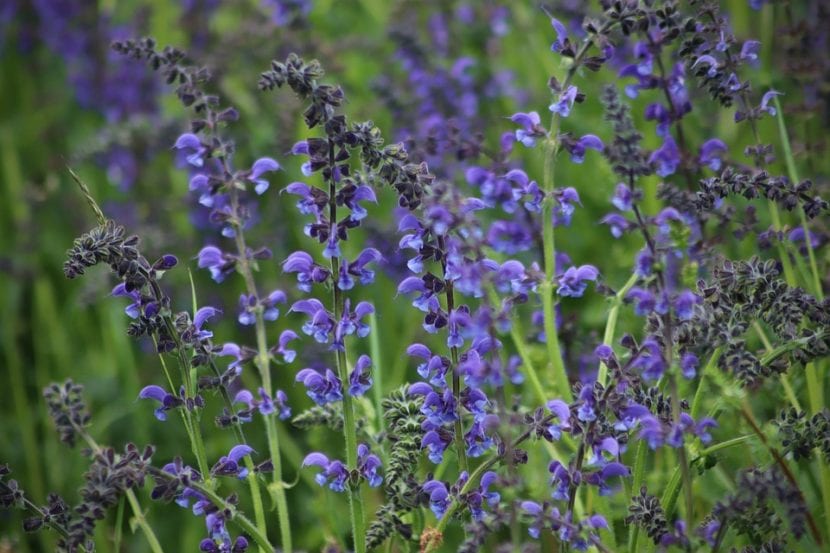
Irrigation must be moderate to frequent. It doesn't withstand drought, but you don't have to go overboard with water either 🙂. Ideally, check the soil's moisture before watering again, especially if you don't have much experience caring for plants. To do this you can insert a thin wooden stick, or weigh the pot once watered and again after a few days (as wet soil weighs more than dry, it is easy to know when it needs watering with this 'trick').
Anyway, in general and depending a lot on the weather, you should water an average of 3 times a week during the summer, and an average of 2 times a week the rest of the year. Do not wet the leaves or flowers, only the earth, since otherwise they could burn and / or rot.
Subscriber
From early spring to late summer it is advisable to pay to the sage pratensis with ecological fertilizers, such as guano or compost. Thus, you will grow healthy and strong.
Multiplication
Sage of the meadows multiplies by seeds in spring and cuttings in spring-summer. Let us know how to proceed in each case:
Seeds
The seeds they are to be sown in seedling trays (on sale here) filled with soil for seedlings (for sale here) putting no more than 2 in each socket, and covering them with a thin layer of substrate.
They are then placed outside, in full sun, and the soil is kept moist. This way they will germinate in about 10 days.
Cuttings
To multiply by cuttings you have to cut a stem with leaves about 10 centimeters long, remove the lower leaves, and impregnate the base with rooting hormones (on sale here).
Then you must plant it in a half bottle with holes in the base with vermiculite (for sale here) and water.
In about two weeks it will root.
Pruning
Late winter This is a good time to cut off diseased, weak, or broken stems, and to trim those that have grown too long.
Plagues and diseases

It is very resistant in general, but if the environment is very hot and dry it can have mealybugs or aphids, which are fought with ecological insecticides such as diatomaceous earth (for sale here).
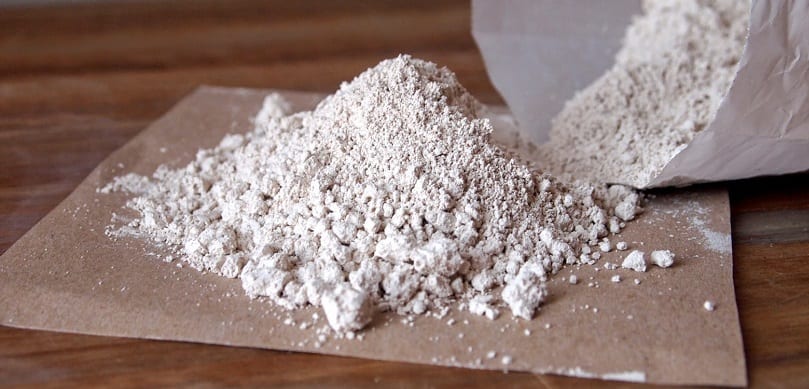
Planting or transplanting time
In spring, when the risk of frost has passed.
If you have it in a pot, transplant it to a larger one every 2 or 3 years.
Rusticity
La sage pratensis resists frosts of up to -6ºC.
What uses does it have?
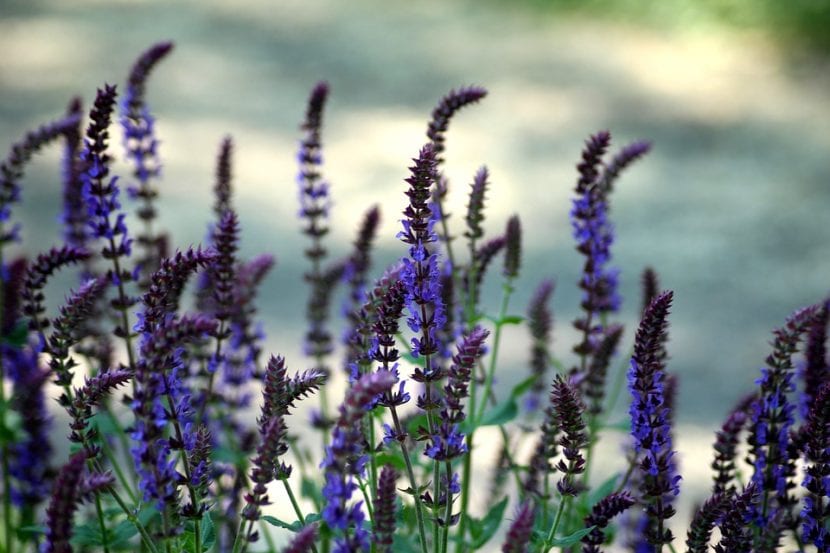
Ornamental
It is a very beautiful perennial herb, the kind that make a garden look very beautiful. It is ideal for borders, pots, large planters... anywhere!
Medicinal
This species of sage it is used as a healing.
What do you think? Did you like it?